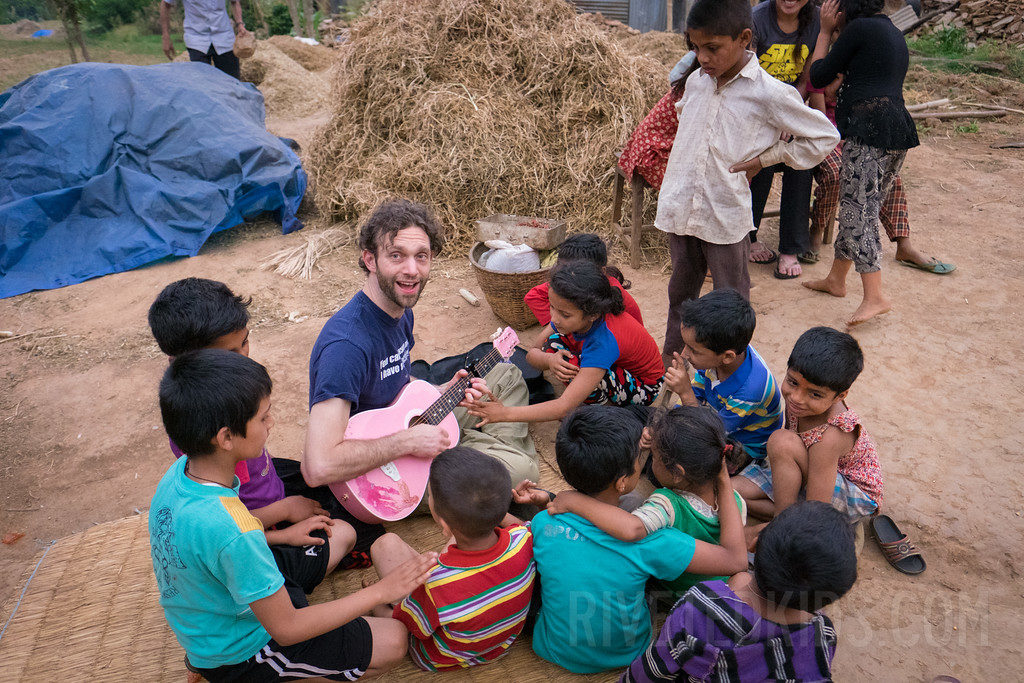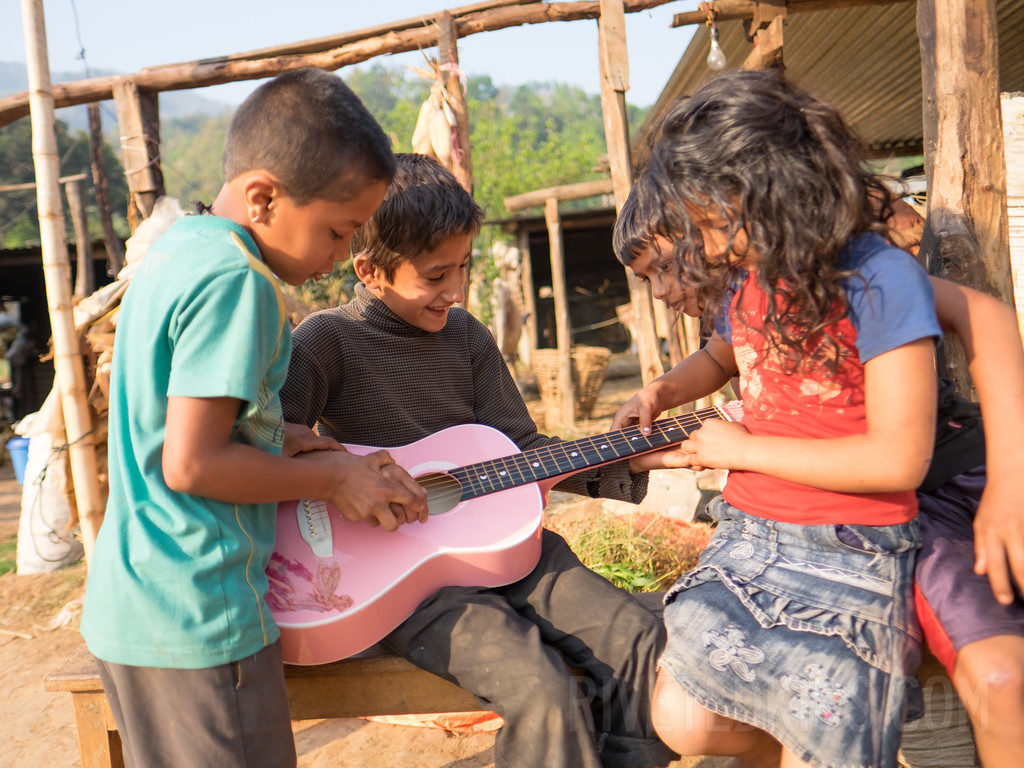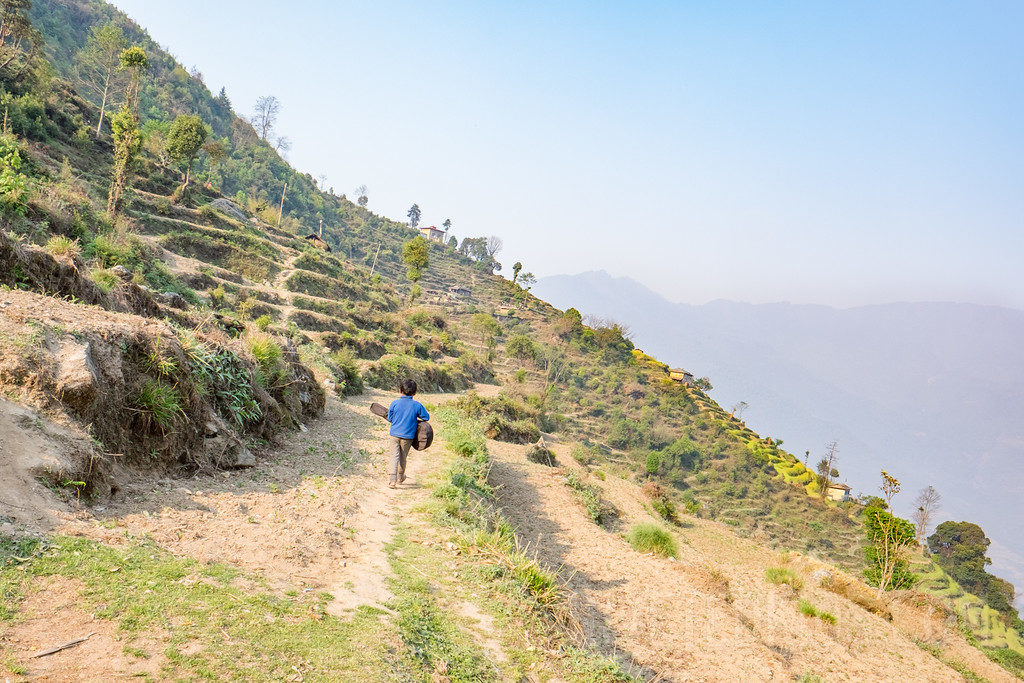Turns out that Van Morison’s “Brown Eyed Girl” is catchy no matter what language you speak.
We were several days into our homestay in Chandeni, Nepal, a few hours outside of Kathmandu. Afternoons were downtime where the kids were ever-present, enthusiastic for hikes or games. I admit, I was a little nervous – how would they respond? I brought the guitar out and sang a few songs – a few originals and a few cover tunes. The best reception I got was Brown Eyed Girl – the “Sha la la la” song as the kids quickly referred to it. (Come on… “Do you remember when? We used to sing…”) I encouraged them to join in and they did. It stuck. And every day afterwards I got a request: “Sing the Sha la la la song!”

Van Morison’s “Brown Eyed Girl” was a hit.
I picked a guitar to take with us because music is something that’s important to me. I’ve been playing since high school, and write songs today. If you ask me what I love, music and songwriting are top of mind. Before leaving for Nepal, I had seen the pink guitar alone in a basement corner. Somehow the practicalities of lugging a guitar through airports, into cabs, onto more planes, and trekking up mountains had been a mental barrier. But seeing it tucked into the corner, it suddenly seemed manageable. I reserved its spot on our upcoming journey.
The pink guitar opened up other connections with kids and music too. They wanted to strum it (uh, actually, all at the same time which led to some chaotic wrangling). But with a little direction – as with all kids – the excitement morphed into turn taking.

Some turn taking with the pink guitar.
In a fun and unexpected way, the pink guitar also led to music being shared back to us. The kids were super comfortable singing songs they knew. Like kids all over the world, Nepali kids learn songs in school. Fortunately, I had a sound recorder with me and captured some interactions.
Here’s (what I think is) the Nepali national anthem:
They even knew one of my childhood favorites! (I’m guessing as a way to help them learn English which is taught in Nepali schools?). Here’s “Twinkle Twinkle Little Star”:
And here’s another Nepali song. (Unfortunately, I don’t have more context – any Nepali speakers out there able to elaborate?)
In the end, taking the pink guitar led to a range of connections and experiences that we definitely wouldn’t have stumbled on otherwise. When you travel next, you may not speak the language when you get there. But think of it like this: If someone were to ask “What’s important to you?” how could you show them without using words? For you, it could be art. For example, take drawing materials and give an art lesson. Or it could be food. For example, take spices and a translated recipe and give a culinary demonstration.
For me? It was my love of music, a pink guitar, and the “Sha la la la” song.
Epilogue of the pink guitar:
The pink guitar traveled with us across Nepal, on airplanes, jeep rides, and days of hiking south of Mt. Everest until our final destination – the community of Hil. I gifted it to a young boy. Here you can see it making its way to a new home, perhaps less neglected than where it was in our basement:

A final destination for the pink guitar.
PS. Here’s an “out take” from singing in Hil, an attempt to teach some AC/DC. 🙂
The first time I met you you were singing in a cafe. I was with your mom! Loved this story!